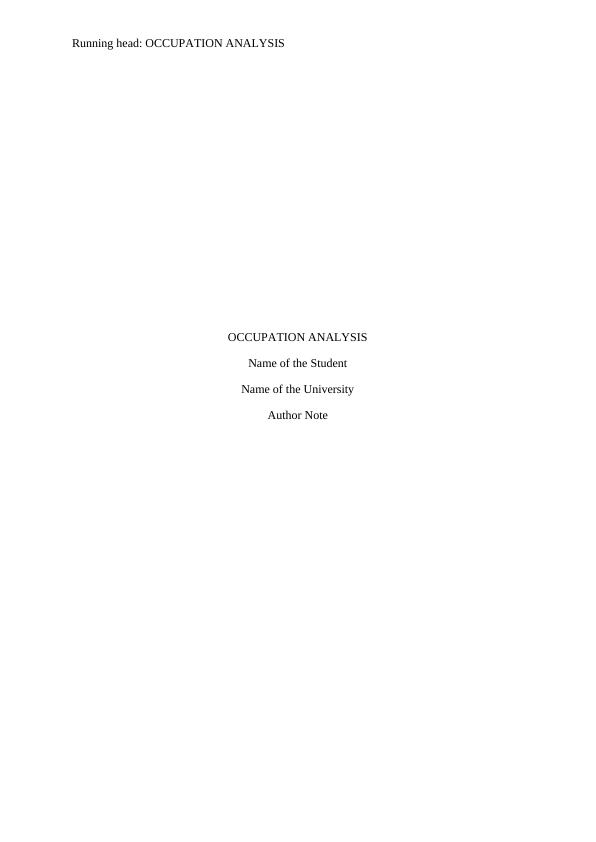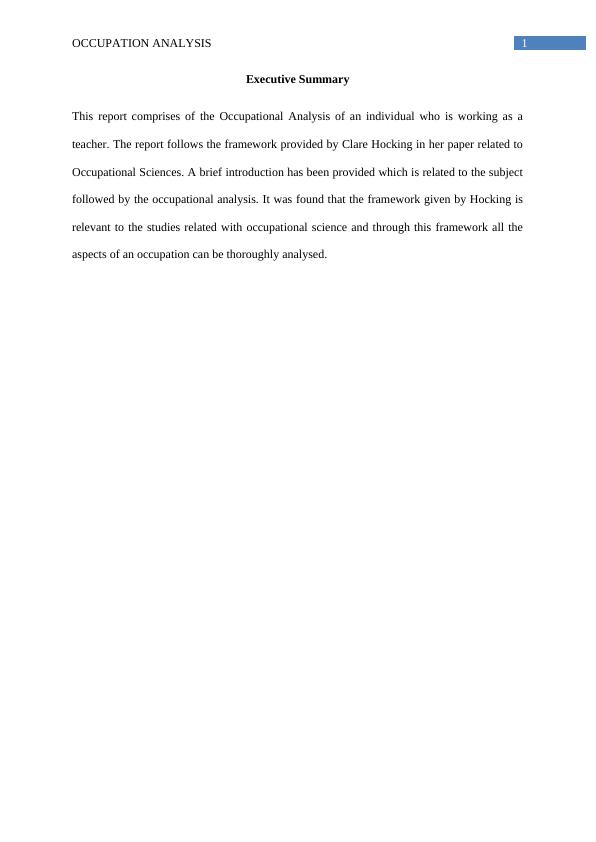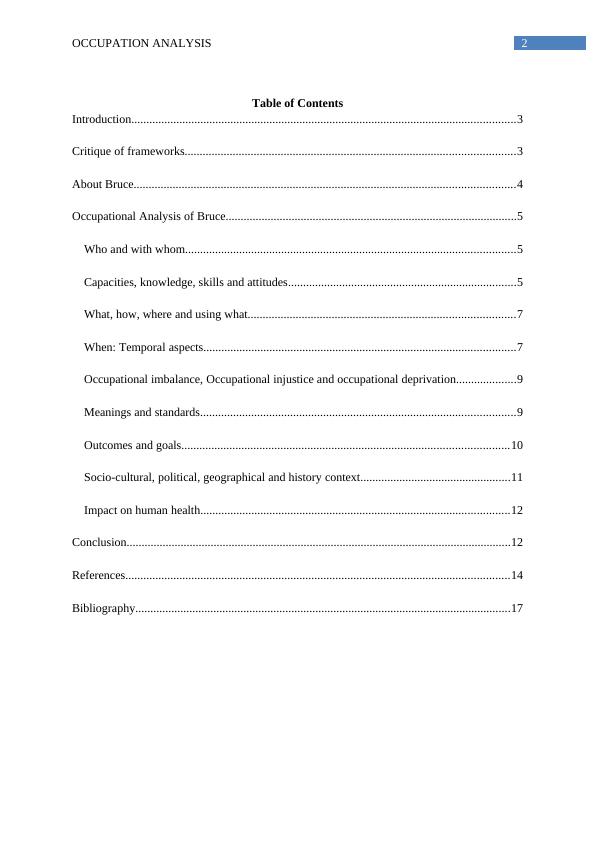Ask a question from expert
Occupational Analysis of an Individual working as a teacher
20 Pages5269 Words405 Views
Added on 2020-04-21
About This Document
It was found that the framework given by Hocking is relevant to the studies related with occupational science and through this framework all the aspects of an occupation can be thoroughly analysed. It was found that the framework given by Hocking is relevant to the studies related with occupational science and through this framework all the aspects of an occupation can be thoroughly analysed. Introduction 3 Critique of frameworks 3 About Bruce 4 Occupational Analysis of Bruce range 5 Who and with whom 5 Capacities, knowledge, skills and attitudes 5 What, how
Occupational Analysis of an Individual working as a teacher
Added on 2020-04-21
BookmarkShareRelated Documents
End of preview
Want to access all the pages? Upload your documents or become a member.
Occupational Analysis Report
|4
|722
|68
Critiquing a Case Study on Stroke Rehabilitation and Evidence-Based Practice in Nursing
|9
|2165
|88
Understanding the Role and Impact of Psychologists: A Comprehensive Analysis in Social Science
|7
|1945
|106
Early Childhood Research Methods l Assignment
|20
|6024
|25
History And Principles of Palliative Care
|5
|1448
|29
Research Critique and Reflection
|5
|636
|371



